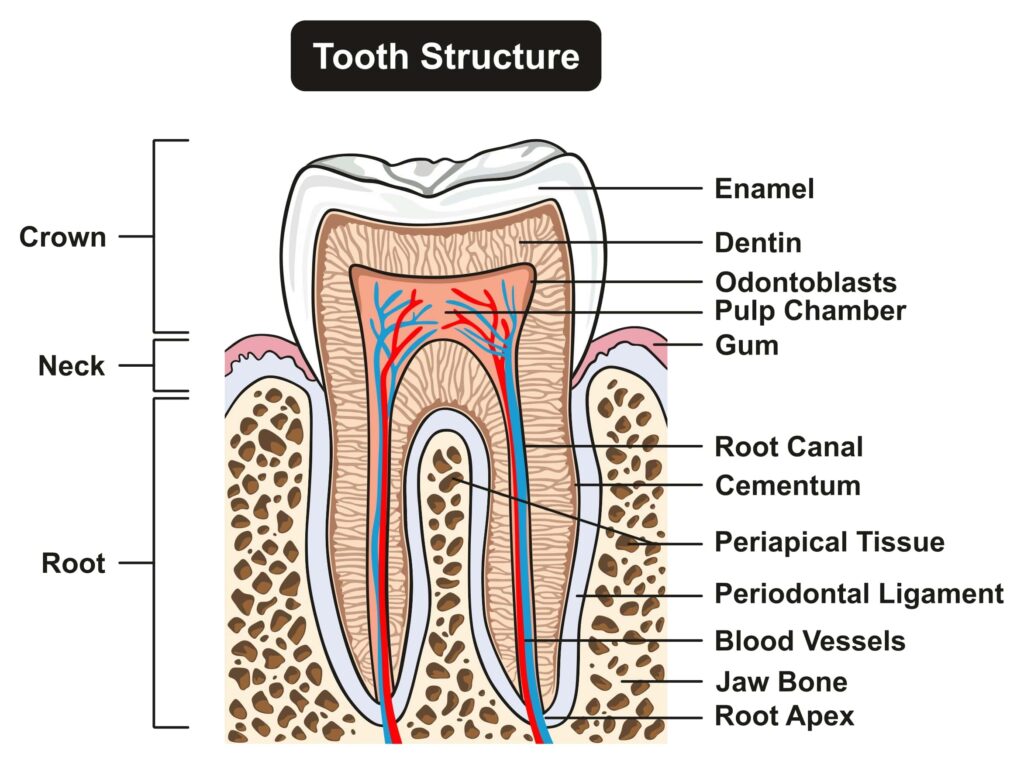Has your child ever wondered what is inside their teeth? Have you? While many people think that teeth are just bones, this is actually not true. In fact, teeth are living body parts composed of nerves, blood vessels, and soft living tissue. However, you wouldn’t know this just by looking at them. That is because the outside and the inside of your teeth are very different. You see, your teeth are made up of different layers and these layers all play an important role in keeping your teeth functioning. Here are the different layers that make up a single tooth:
Enamel
For starters, the outside of your teeth is made up of tooth enamel, which is extremely hard and strong. This is one reason why many people think that teeth are bones. Another reason why people may think that teeth are bones is because they are partially composed of calcium. While tooth enamel is primarily made up of calcium and phosphate, it also contains magnesium, sodium, fluoride, and carbonate. Since tooth enamel is composed of minerals, it is even stronger than bones. However, this also means that it cannot regenerate itself like bones can. When tooth enamel is eroded, this is known as demineralization. While enamel can remineralize to some extent, it cannot repair itself once a cavity has formed. This is why brushing and flossing are important to prevent bacteria from damaging the enamel.
Dentin

Directly underneath the enamel layer is the dentin layer. Like enamel, dentin is also composed of minerals. However, the dentin layer is also composed of microscopic tubules, which are basically tiny hollow tubes that lead to the inside of the tooth. Although these tubes are normally protected by the enamel, when enamel wears down hot, cold, sticky, acidic, or sweet foods are able to stimulate the nerve through the tubes. This ultimately leads to a sudden, deep pain known as tooth sensitivity. Unfortunately when tooth decay reaches the dentin layer, the rate of decay increases since dentin is not as hard as enamel.
Pulp
The innermost layer of the tooth is known as the dental pulp. The pulp is a jelly-like consistency that contains various soft tissues including nerves, blood vessels, and connective tissues. The functions of dental pulp include: creating dentin, providing the tooth with nutrition, and protecting the tooth by allowing it to sense temperature or pressure changes. The dental pulp resides in the pulp chamber, which is another name for the hollow center found inside your tooth. The pulp chamber refers specifically to the hollow area within the crown of the tooth, while the root canals are the hollowed areas that extend down into the tooth roots. Since blood vessels inside the tooth travel down through the root canals and out into the main bloodstream, this means that tooth infections can possibly spread to other nearby teeth. This is why pulp infections must be removed from the affected tooth as soon as possible.






